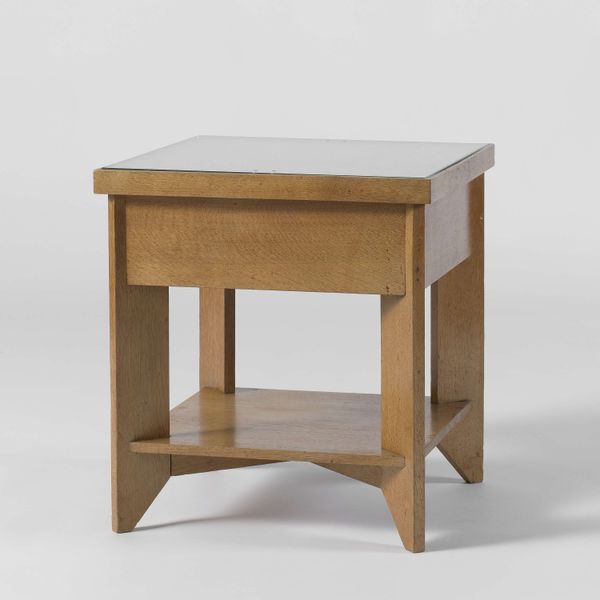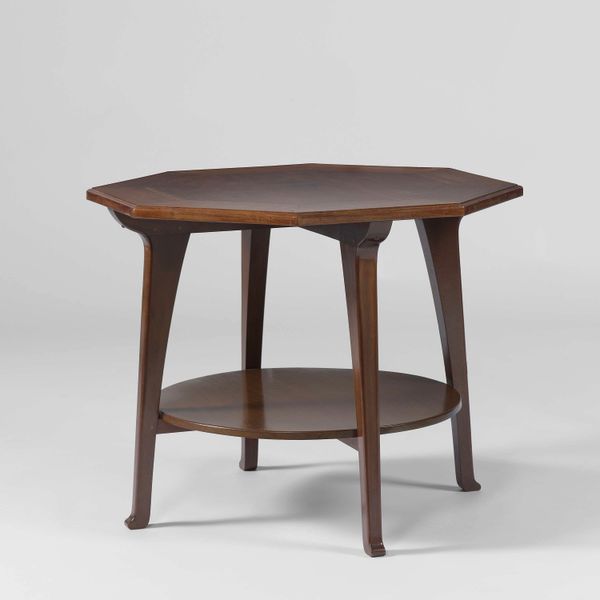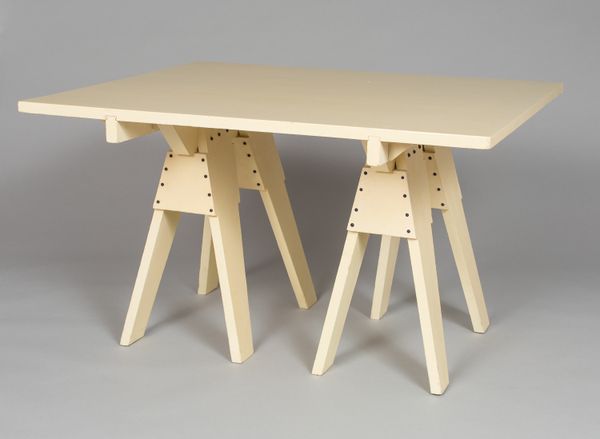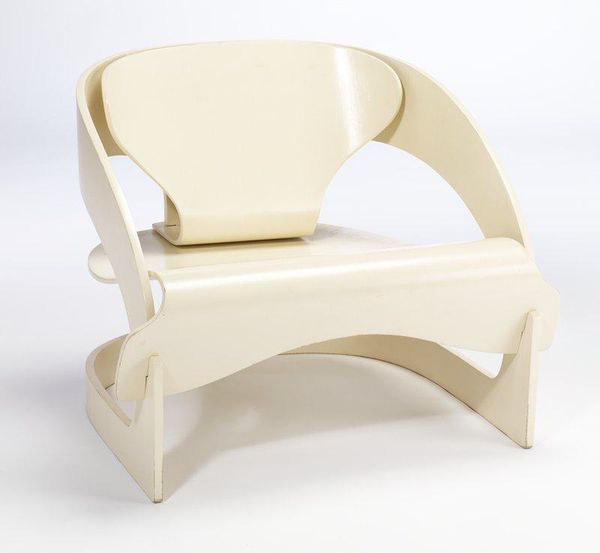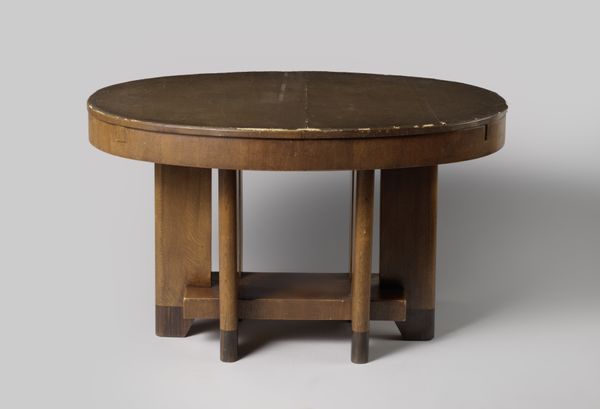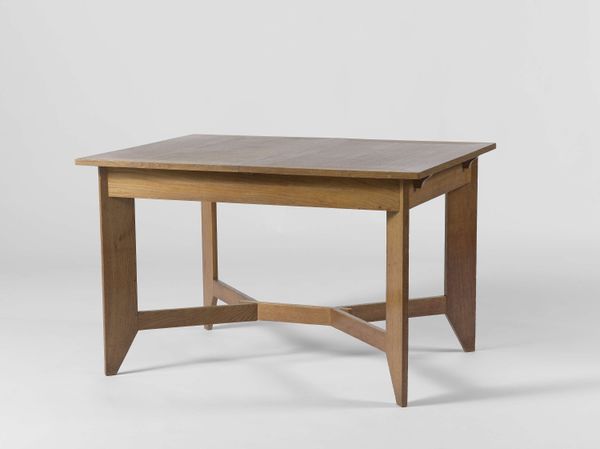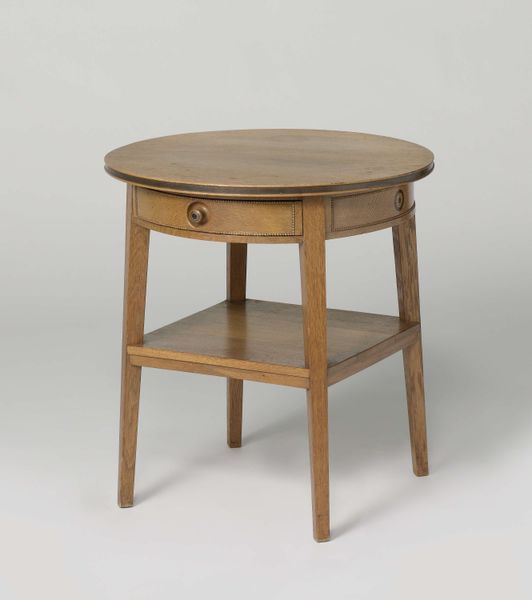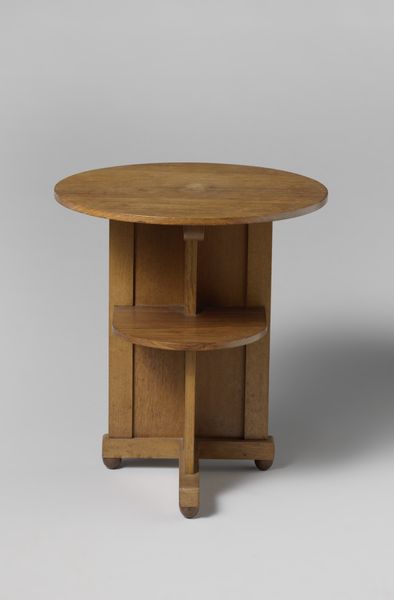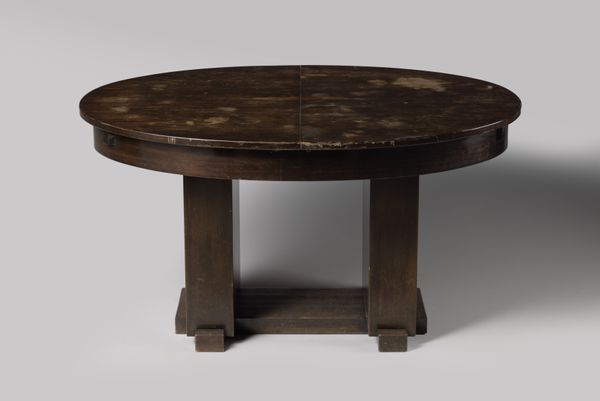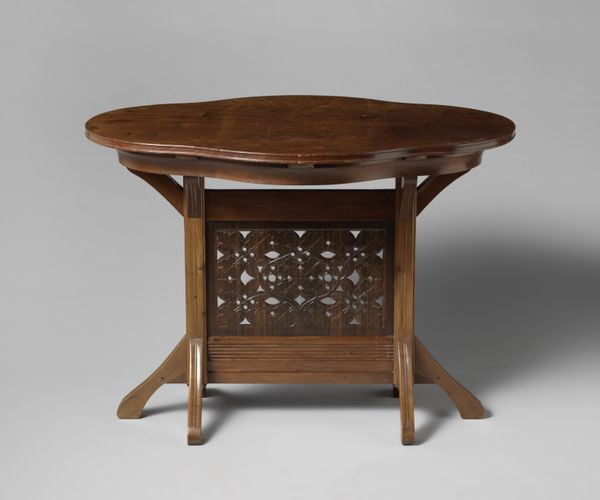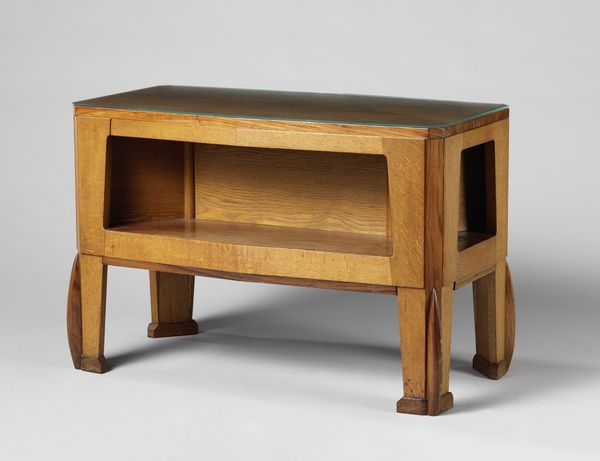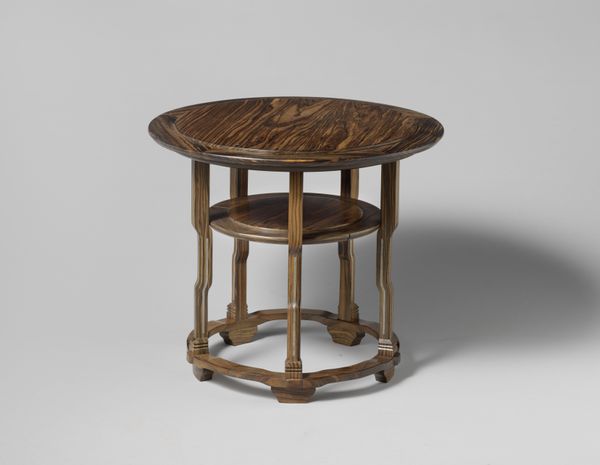
wood
#
table
#
art-nouveau
#
furniture
#
glasgow-school
#
wood
#
decorative-art
Dimensions: 61 × 92 × 50.2 cm (24 × 36 1/4 × 19 3/4 in.)
Copyright: Public Domain
Curator: Here we have "Table," a wooden artifact crafted by Charles Rennie Mackintosh in 1902. Its form beautifully embodies the Art Nouveau style. Editor: Whoa, minimalist dream meets antique shop! I'm getting this really stark, almost ghostly vibe from the bleached wood, but there's something undeniably elegant about the shapes. Curator: The piece utilizes simplified geometry, with the round tabletop contrasting beautifully with those subtly tapered legs, divided into a cluster of four at each corner of the tabletop. Editor: True! It's like Mackintosh wanted to play with balance and surprise. And what's going on with the leg support details? They seem almost like stylized monacles or even little faces staring out. Are those common with his works? Curator: Quite insightful! They're abstract representations of motifs prevalent in his aesthetic. His play on such geometric forms indeed lends an almost sentient quality to this seemingly inanimate object, don't you agree? We can definitely appreciate how it departs from earlier furniture conventions. Editor: Yeah, it's definitely more than just somewhere to park your coffee mug. There’s this airy lightness despite the wood itself. And those little visual rhymes, with circles and gently curved undersides give it an art-meets-function quality. It teases the mind somehow...almost surreal! Curator: Mackintosh integrated ornament as intrinsic elements within the furniture’s structural framework. Such innovations challenged traditional design expectations while setting new directions. Its design epitomizes his intent on elevating decorative art as a field within modern aesthetic thinking. Editor: Well, whatever he was doing, I am now contemplating the poetry of furniture design. I might not ever look at a table the same way again. Curator: Precisely my sentiments exactly; this object’s intrinsic language offers far more than utilitarian simplicity—it communicates a revolutionary philosophy of form. Editor: You've made me see it on another level, from this strange stark object, into an icon of thought. Thanks for sharing that lens, old friend. Curator: My pleasure. A true engagement, that is, into its aesthetic language and materiality!
Comments
No comments
Be the first to comment and join the conversation on the ultimate creative platform.
